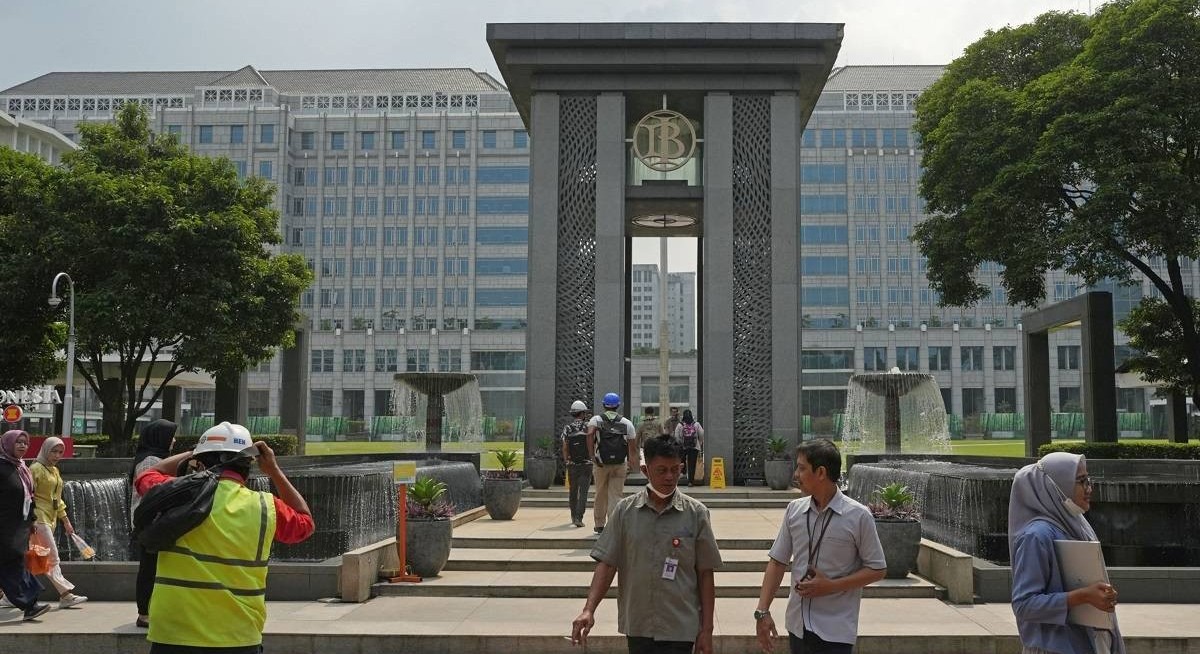(Oct 23): Bank Indonesia is changing tack in its bid to support the economy, signalling that monetary policy is failing to deliver.
The central bank on Wednesday confounded the market by holding its key interest rate unchanged after three straight cuts. Instead, it unveiled reforms and rewards for banks that get into line and lend more at lower rates.
Bank Indonesia is digging deep into its policy tool box, frustrated that rate cuts and an unprecedented US$12 billion cash injection have barely boosted lending and economic activity. Governor Perry Warjiyo told reporters Wednesday that while the benchmark BI-Rate has been slashed 150 basis points since late September, bank lending rates have dropped just 15 basis points — clear evidence that consumers and businesses are not getting the full benefit of lower borrowing costs.
“We still see room for further interest rate reductions, but our current focus is on strengthening the effectiveness of monetary policy transmission that has been pursued so far,” Warjiyo said on Wednesday.
It’s the first time in this easing cycle he has explicitly identified transmission as a consideration, on top of factors such as inflation, currency and economic growth.
The task is urgent for Bank Indonesia, which — like central banks from the Federal Reserve to the Bank of Thailand — is under pressure to get behind government efforts to bolster faltering growth.
See also: China finds costly new way of extending Xi’s global yuan push
Loans grew only 7.7% in September from a year earlier, barely up from 7.6% in August, BI data showed. That’s short of the central bank’s 2025 goal of 8%-11%, and partly reflects caution in the face of the trade war and weak consumer sentiment.
Indonesia’s largest bank by assets PT Bank Mandiri said in a statement on Thursday that it aims to conduct its lending business in a “healthy and sustainable manner.”
“Our focus is on boosting financing in productive and strategic sectors that can strengthen national economic competitiveness, while continuing to prioritize the principle of prudence,” said Mandiri’s corporate secretary Ashidiq Iswara.
See also: China says trade talks with US set for Friday in Malaysia
It’s not unusual for there to be stickiness in bank rates compared to central bank benchmarks, but Warjiyo says Indonesia’s particular problem is that funds are being parked in securities, instead of lent to customers. Special deals with large, long-term depositors are also holding up overall deposit rates, he said.
So from Dec 1, banks that lower rates and lend to priority sectors can slash as much as 5.5 percentage points off their reserve requirement ratio, from the current level of 9%.
“By directly linking incentives to the pace of rate adjustment, BI aims to address the bottleneck in monetary transmission and support credit growth more effectively,” said Krystal Tan, an economist at Australia & New Zealand Banking Group Ltd.
In addition, Bank Indonesia will further reduce sales and yields of its rupiah securities, known as SRBI, and focus on issuing shorter tenors to expand liquidity.
It also plans to issue floating-rate notes, which could serve as a more flexible benchmark for bank lending rates, Citigroup Inc economist Helmi Arman said.
The reserve ratio tweaks act as an incentive for banks to lend, while changes to SRBI issuance are aimed at reducing the securities’ attractiveness to banks, relative to loans. It remains to be seen if the new measures can move the needle.
According to Josua Pardede, chief economist of PT Bank Permata, “Banks still depend heavily on large time deposits with special rates, making it hard for funding costs to drop quickly.”
To stay ahead of Singapore and the region’s corporate and economic trends, click here for Latest Section
There are also higher credit risks among consumers and small and medium enterprises that further limit the scope for rate cuts, he added.
Stocks of the country’s biggest banks have all fallen this year, with shares of state-owned Bank Mandiri suffering the most, followed by privately owned PT Bank Central Asia. The ratio of bad loans has meanwhile climbed to 2.28% as of August, according to the Financial Services Authority’s latest data. That’s up from 2.08% in December.
The policy rate can be a blunt tool in developing nations like Indonesia, where millions of people don’t have bank accounts or formal loans, and financial markets are shallow.
General pessimism about the cost of living and job security, which triggered violent protests in late August, may mean there’s little appetite to borrow among consumers. SMEs may also be risk-averse as competition from abroad, supply chain disruptions and the global trade war cloud the outlook.
“When the demand is there and triggering a rate competition among banks, the rate will eventually go lower. It’s like a chicken and egg situation,” said Christopher Andre Benas, head of research at PT BCA Sekuritas.
Uploaded by Magessan Varatharaja




